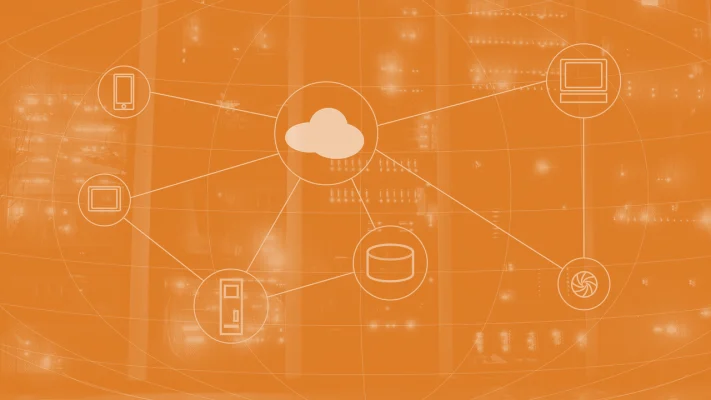Actuators in IoT are frequently lumped into the same category as IoT sensors. But while sensors and actuators interact closely with each other, they are actually distinct components.
IoT has gone from being a novelty to an integral part of our everyday lives. We increasingly rely on smart watches, smart refrigerators, smart TVs, smart desks, and much more. In fact, the number of IoT devices worldwide has already surpassed 13 billion.
With this proliferation in IoT devices, it becomes even more important to understand how IoT ecosystems function. Every IoT system and device has multiple parts, including sensors, actuators, software, etc. We hear a lot about sensors, but not so much about actuators.
So here we’re going to cover how actuators are used in IoT, clear up the difference between them and sensors, and list the most common actuators you’ll come across in 2023. Let’s get into it.
What Are Actuators in IoT?
An actuator is a device that converts energy into motion. It does this by taking an electrical signal and combining it with an energy source. In an IoT system, the actuator can act on data collected by sensors to create an outcome as determined by the chosen settings of the user.
What Are Sensors in IoT?
A sensor is the part of an IoT device or system that collects information about the environment. For example, a temperature sensor in a smart HVAC system collects temperature data. By contrast, an actuator in that system could trigger cooling or heating functions depending on predetermined settings.
What’s the Difference Between Sensors and Actuators in IoT?
Essentially, an actuator creates movement, whereas a sensor monitors environmental conditions. These conditions may include fluid levels, temperatures, vibrations, or voltage.
The main characteristics between sensors and actuators can be broken down further into the following:
- Electrical signaling – Actuators rely on heat (in the case of thermal actuators) or motion energy (in the case of hydraulic and pneumatic actuators, among others) in order to determine the resulting action. On the flipside, sensors work through electrical signaling to read and record the environmental conditions.
- Conversion direction – An actuator converts an electrical signal to a physical action. A sensor converts a physical attribute into an electrical signal that informs the system of external conditions.
- Inputs and outputs – Actuators track the outputs of machines and systems, whereas sensors receive inputs from the environment.
If you want to learn more about the different types of sensors used in IoT, take a look at The Top 10 Sensor Types in IoT and their Applications
Different Actuator Types in IoT
Now that we’ve looked at what separates actuators from sensors, we’re going to go deeper into the different actuators on the market and the function they serve.
Hydraulic Actuators
The sole function of an actuator in a hydraulic control system is to convert the hydraulic energy supplied by the pump and processed by the control elements into useful work.
Pneumatic Actuators
A pneumatic actuator is a device that converts energy – typically in the form of compressed air – into mechanical motion.
Pneumatic actuators are notable in their use in opening and closing valves. They are particularly useful in applications where there’s an ignition or fire risk because pneumatic actuators won’t cause sparks.
Pneumatic actuators are also known in the industry by several different monikers, including:
- Pneumatic cylinders
- Air cylinders
- Air actuators
Electrical Actuators
An electric actuator converts electricity into kinetic energy in either a linear (along a straight line), or rotary (in a circle) motion.
The motor of an electric actuator can operate at any voltage, however, the most common voltages used are:
- 230 VDC
- 208 VDC
- 115 VAC
- 24 VAC
- 24 VDC
- 12 VDC
They’re typically used in industrial applications associated with manufacturing valves, pumps, and motors.
Thermal Actuators
A thermal actuator is a type of non-electric motor. It’s equipped with thermal-sensitive material that’s capable of producing linear motion in response to temperature changes. Temperature changes can give rise to such tasks as releasing latches, operating switches, and opening or closing valves.
When used alongside other devices, a thermal actuator doesn’t require an outside power source to produce motion. Thermal actuators can be used for many applications and in many industries, including aerospace, automotive, agriculture, solar, construction, and manufacturing.
Magnetic Actuators
A magnetic actuator is a device that uses microelectromechanical systems (MEMS) to convert an electric current into a mechanical output.
They operate in either a rotary or linear direction and can have continuous or limited motion. Magnetic actuators are used within the aerospace, automotive industry, health care, computers, and many other industries.
Relay Actuators
A relay is an electrically operated switch. The majority of relays use electromagnets to mechanically operate a switch. However, other operating principles can also be used: for example, solid-state relays, which have no moving parts and rely purely on optical signals to trigger a change rather than a mechanical switch.
It takes a relatively small amount of power to operate a relay coil. However, it can still be used to control motors, heaters, lamps, or AC circuits.
Final Words
Every day, more businesses and individuals are relying on IoT systems for everything from manufacturing to making coffee in the morning. The better we understand this useful technology, the better we can use it to improve the world around us.
Read Our Other Resources
We’ve published a range of IoT resources for our community, including:
- A Guide to IoT Protocols & Standards, which provides a complete overview of all the major protocols and standards available.
- Buying versus building an IoT platform, which discusses how to choose the best option for you.
- Our guide on how to Develop IoT Apps and what platforms you can use.
- How to Choose the Best IoT WiFi Module and what to consider when making your choice.
- A complete Guide to Microcontrollers for IoT, which explains all your options when it comes to choosing an MCU for your project.








